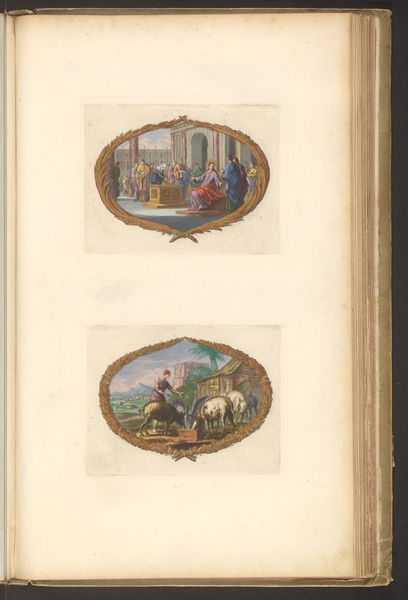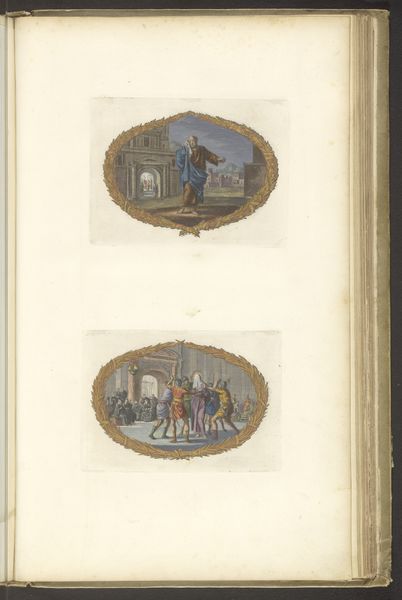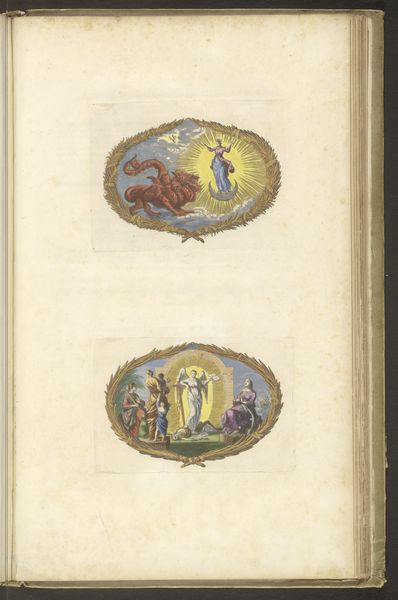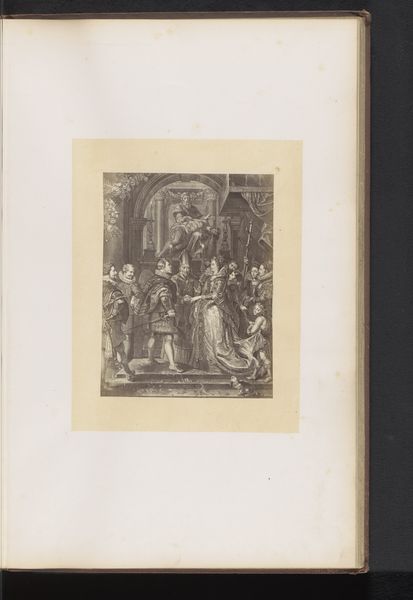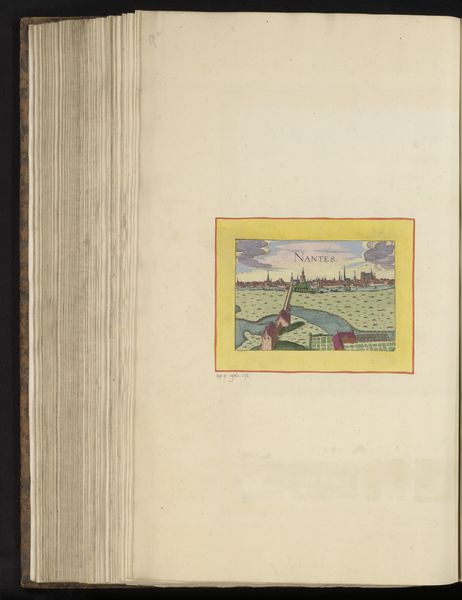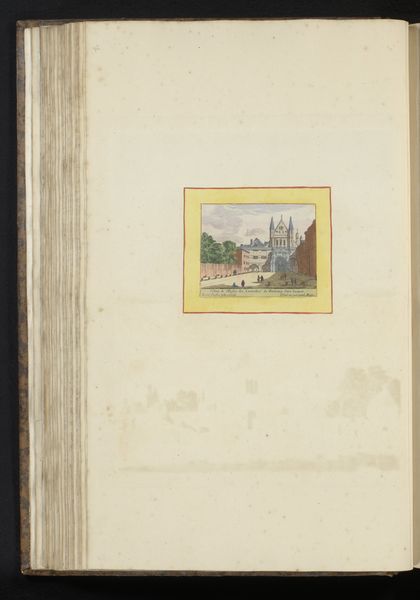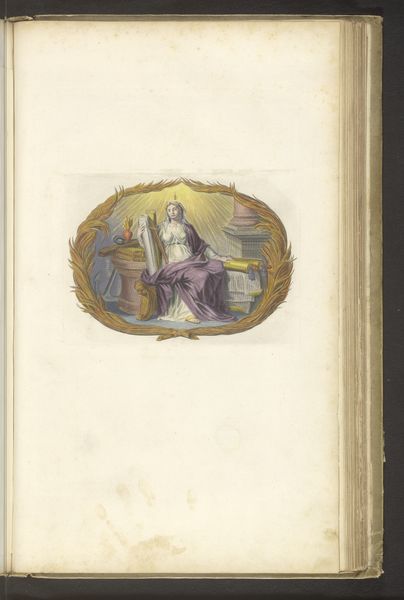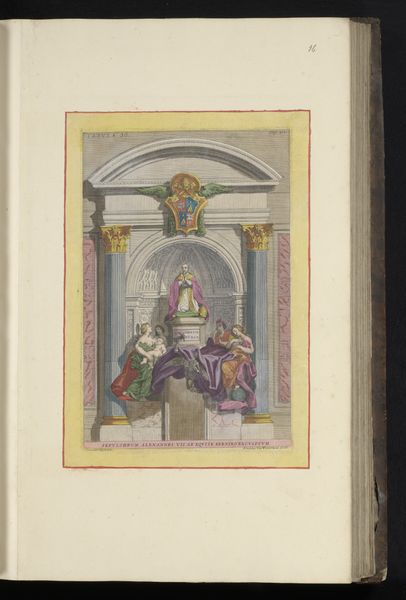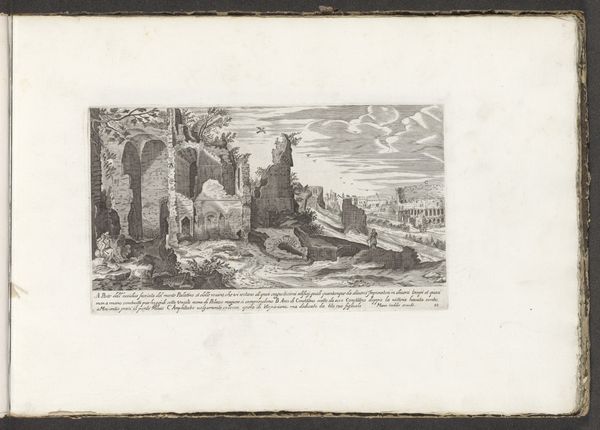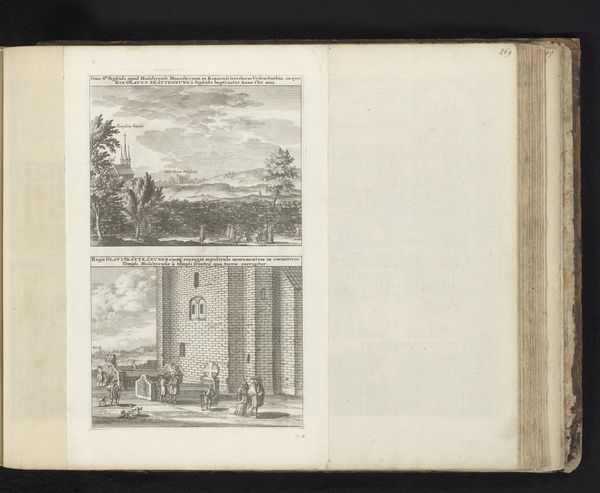
drawing, painting, paper, watercolor, ink
#
drawing
#
water colours
#
narrative-art
#
painting
#
paper
#
11_renaissance
#
watercolor
#
ink
#
coloured pencil
#
watercolour illustration
#
northern-renaissance
#
miniature
Dimensions: height 108 mm, width 182 mm, height 115 mm, width 150 mm, height 440 mm, width 275 mm
Copyright: Rijks Museum: Open Domain
Editor: This is "Blad met illustratie en vignet," created around 1700 by Dirk Janszoon van Santen. It's a watercolor and ink drawing on paper featuring two narrative scenes, almost like miniatures within the larger page. The scenes feel quite biblical in nature. What do you see in this piece from a historical context? Curator: I see a powerful demonstration of how religious imagery functioned within the public sphere during the 18th century. Consider the choice of watercolor and ink. These were accessible materials, suggesting a wider intended audience beyond the wealthy elite who might commission large oil paintings. The narrative-art theme reflects a societal focus on conveying moral lessons through easily digestible visual stories. Do you notice anything about how the figures are presented? Editor: Well, the figures in both scenes are very deliberately posed, almost theatrical. It strikes me as quite different from, say, a candid snapshot. Curator: Exactly! This theatricality is key. Think about the Reformation's impact on religious expression. The direct, emotional appeal of these images could serve to reinforce religious doctrine and strengthen communal bonds, especially in a time of religious and political upheaval. The miniature format itself also suggests personal devotion, like an intimate devotional object. Do you think the placement of these two scenes relates in any way? Editor: That’s interesting! The upper scene does look like a sermon to a crowd, and the bottom vignette looks like some scene with Mary and the infant Jesus. The whole thing seems didactic, meant to instruct as much as inspire piety. I never thought about artwork needing to be instructive! Curator: Precisely! And it makes us consider how these images were encountered. Was this page bound in a book? Was it displayed publicly? Understanding its original context reveals the potent role art played in shaping societal values. Editor: That’s given me so much to consider about art's public role, beyond just aesthetics. Curator: Indeed, it's a constant negotiation between artistic expression and social function.
Comments
No comments
Be the first to comment and join the conversation on the ultimate creative platform.
